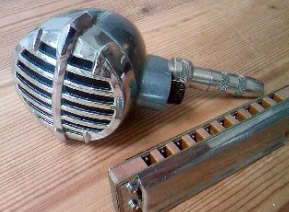Octaving The Blues On Harmonica
 Putting double-barreled blues harp into your playing
Putting double-barreled blues harp into your playing
As a journeyman blues harp player listening to the experts, there were moments when those guys hit what I call the tickle spot and I shuddered with pleasure. For years I just couldn’t work out how they did it. It just sounded like they were producing harmonics and extra fat tone from out of nowhere.
It wasn’t until I broke into third position playing and learned that octaving can be achieved with 5 hole splits – as well as easier 4 hole splits – that the secret began to reveal itself. By reapplying those 5 hole splits to cross harp, the hairs on my neck stood up and I broke out in goose bumps. Bingo! There was that tickle spot. So how do you pick it up?

 Our Lady of blessed acceleration don’t fail me now
Our Lady of blessed acceleration don’t fail me now Brace yourself and take a deep breath. It’s time to face everyone’s worst harmonica nightmare –
Brace yourself and take a deep breath. It’s time to face everyone’s worst harmonica nightmare – 
